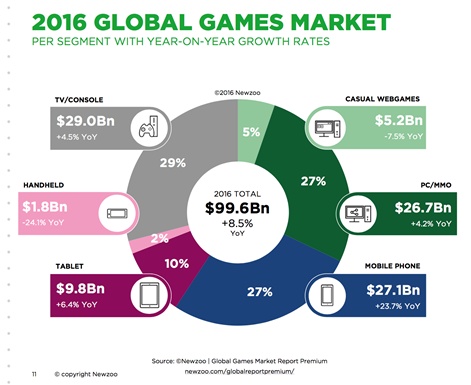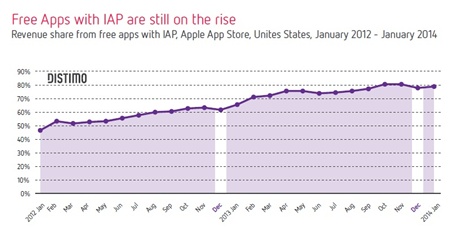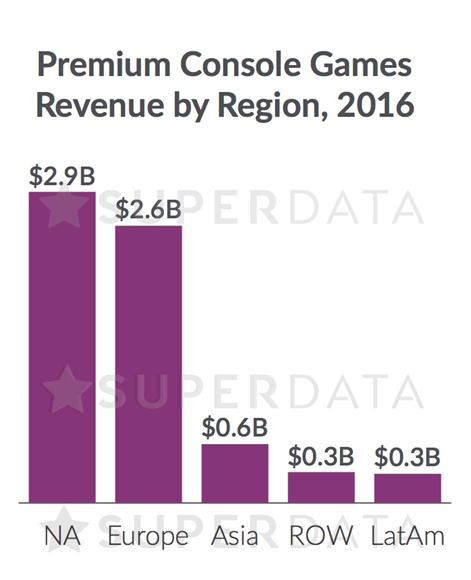Torulf Jernström is CEO of Finnish developer Tribeflame.
His blog is Pocket Philosopher.
You can read all his PocketGamer.biz columns here.
The largest market for games, as measured by both player numbers and revenue, is being completely ignored by the games media. Why?
Newzoo claims the mobile games market is worth $36.9 billion, while Superdata claims it’s $40.6 billion and App Annie says it’s $50.4 billion (as Jon Jordan commented this week).
One possibility for the difference in revenues is that Newzoo and Superdata are missing the ad-driven part of the market.
It’s a lot harder to estimate the ad revenues as they are are split up among a large number of ad networks that are often private companies that do not report numbers as transparently as Google and Apple do.
App Annie’s Monetisation report from 2016 claimed that in 2015 games made $24.8 billion from IAPs, and $21.1 billion from ads, for a total of $45.9 billion. Ad revenue is therefore a very significant part (46%) of mobile games revenues that might be missing from the other reports.

Regardless of what the exact numbers are, it is clear that mobile games are the largest part of the overall games business.
Newzoo claims that the whole market is worth $91 billion, while Superdata says it is $99.6 billion. They differ mostly in their estimates for the size of the console market, possibly by Superdata including hardware sales, while Newzoo only counts games.
That puts mobile games’ market share anywhere between 37% and 45%.

In terms of players, mobile games are even more dominant. The Superdata report estimates a total Monthly Active User (MAU) number of 2.6 billion players on mobile, with 755 million on PC free-to-play, 154 million on PC premium and 196 million on consoles.
Mobile, therefore, has way over twice the player numbers of all others combined.
Given this position at the top of the market for both revenue and players, it is striking how little mobile F2P games are talked about in the media.
Googling for the “Best games of 2016”, and going by the top hits I get, here’s GamesRadar (25 games), The Telegraph (35 games), The Guardian (10 games), and The Verge (11 games).
Their lists include 81 mentions of games, and contain a grand total of two mobile games: Pokemon GO (F2P) and Reigns (premium). It is slightly more common to find mention of premium mobile games. The Verge mentions two on their 10 game list for 2017.

Sadly, the premium mobile games market share fell to irrelevance back in 2012 and 2013. Currently you have to scroll down to position 232 on the US App Store Top Grossing charts to find the first game that does not use IAPs (it’s currently GTA: San Andreas).
And that's before taking into account the ad revenue that F2P games have access to and premium titles do not. Premium on mobile has for years been below 1% of the revenue generated.
The question is: why? With mobile F2P having both the players and the money, why are they ignored? Allow me to speculate a bit.
First off, premium console and PC games are very clearly skewed towards Western markets. Compare the shares of Asia versus the West for console and mobile games in SuperData’s report.

Also, I think it’s because the games journalists are not the players, and certainly not the payers, of mobile games. To simplify, the revenue generating players fall into three categories:
- The ad watchers - Heavy players of the Top Downloaded games. Skews younger.
- The casuals - Typically older female audience playing match-3 games, casino, etc. Loyal players giving out a steady revenue stream.
- The killers. Rich, competitive men with limited time and a lot of money, beating each other with heavy spending on competitive strategy games.
My guess is that the journalists writing about games do not identify with these groups of people. Game journalists are seldom middle-aged women, and obviously they are also not high paid lawyers or investment bankers.
The simple time killers that are generating a lot of the ad revenue are usually (quite rightly) dismissed as lacking in depth.
Thus, we end up with the situation we have: the largest segment of the huge games business is almost completely invisible in games news.





















